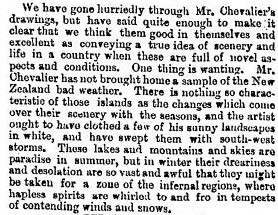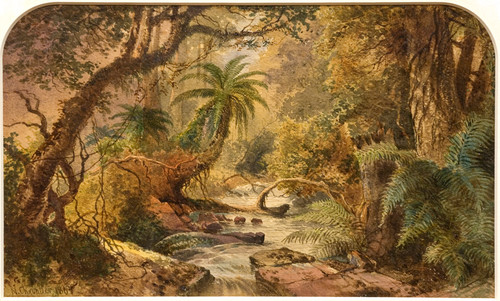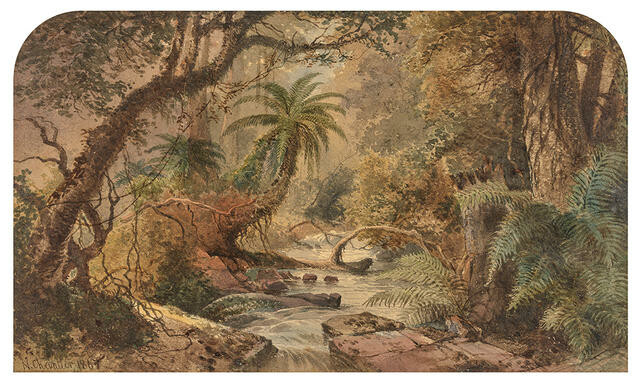B.
Hapless Spirits
Behind the scenes
On this day in 1828 the artist Nicholas Chevalier was born.
Chevalier was born in St Petersburg, studied in Switzerland, worked in Australia and visited New Zealand three times: in 1865-6, 1868 and 1869. There is a fine article about him by Melvin Day in the Dictionary of New Zealand Biography.
In 1871 he held an exhibition of his New Zealand sketches at the Crystal Palace in London. The review in The Times commented briefly on each piece in the show, as was the custom of the time, and then concluded with this:

Sketches of New Zealand Scenery. The Times (London, England), Thursday, July 13, 1871; p. 4.

Nicholas Chevalier Pigeon Bay Watercolour. Collection of Christchurch Art Gallery Te Puna o Waiwhetū; purchased 2006.
